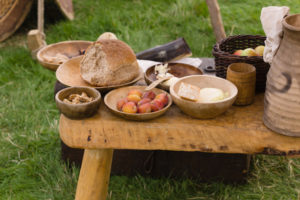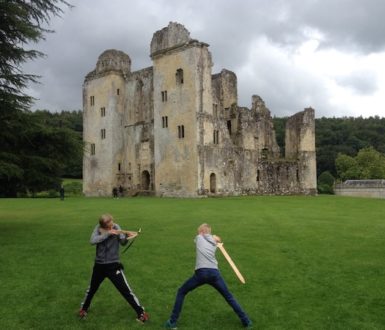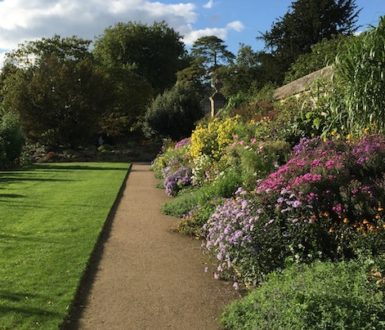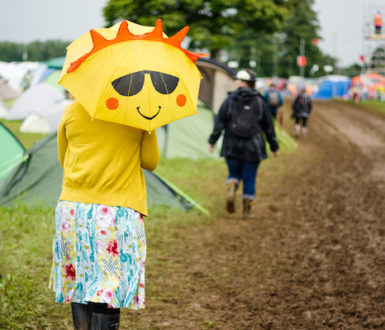
If you’d like to learn more about a particular period of British history, one of the best ways is to go to a living history museum. These museums don’t just have things on display – instead there are real (or replica) homes and other buildings. There are also live demonstrations that make you feel like you are stepping back in time.
Stone Age/Iron Age
- Butser Ancient Farm, Hampshire. Reconstructions of buildings from the Stone Age, Iron Age, Roman and Anglo-Saxon times, alongside experimental archaeology.
- The Scottish Crannog Centre, Perthshire. Reconstructed crannog (Iron age lake house) and hands-on demonstrations of ancient crafts and technologies.
- Flag Fen, Cambridgeshire. Reconstructed Bronze Age village and genuine preserved wooden walkway.
Roman
- Fishbourne Roman Palace, West Sussex. Excavated Roman palace including over 20 mosaics, with recreated garden:
- Wroxeter Roman City, Shropshire. Explore remains and reconstructions of buildings from a (very small) Roman city.
- Butser Ancient Farm, Hampshire. Reconstructions of buildings from the Stone Age, Iron Age, Roman and Anglo-Saxon times, alongside experimental archaeology.
Anglo-Saxon
- Jarrow Hall, Northumberland. Recreation of an Anglo-Saxon farm and village, with museum about the Venerable Bede (a famous monk).
- West Stow, West Suffolk.
- Butser Ancient Farm, Hampshire. Reconstructions of buildings from the Stone Age, Iron Age, Roman and Anglo-Saxon times, alongside experimental archaeology.
Norman
- Stansted Mountfitchet Castle & Norman Village of 1066, Essex. Recreation of a wooden Norman Motte and Bailey castle and its surrounding village.
Viking
- Jorvik Viking Centre, York. The city of York is reimagined in Viking times.
Medieval/Tudor
- Mary Arden’s Farm, Warwickshire. The childhood home of William Shakespeare’s mother, built in 1514.
- Weald & Downland Museum, West Sussex. Tells the story of rural life in England over 1,000 years, including medieval and Tudor times:
- Cosmeston Medieval Village, Vale of Glamorgan. Restored medieval village.
1600s/1700s
- Little Woodham Living History Village, Hampshire. Experience life in a small 17th century village.
- Chiltern Open Air Museum, Buckinghamshire. 37 rescued buildings, mostly from 1700s to 1900s.
- Auchindrain Township, Argyll. A well-preserved example of a Scottish Highland farm township, including restored longhouses.
- St Fagan’s National Museum of History, Cardiff. Collection of historic buildings set in the parkland of a castle.
1800s
- Morwellham Quay, Devon. Historic port, village and copper mine.
- Beamish Museum, County Durham. Tells the story of life in the North East from the 1820s.
- Chiltern Open Air Museum, Buckinghamshire. 37 rescued buildings, mostly from 1700s to 1900s.
- Skye Museum of Island Life, Isle of Skye. Township of restored thatched cottages (crofts).
- St Fagan’s National Museum of History, Cardiff. Collection of historic buildings set in the parkland of a castle.
Industrial Revolution
- Blist’s Hill Victorian Town and Ironbridge Gorge, Shropshire. Ironbridge Gorge is the birthplace of the Industrial Revolution.
- Black Country Living Museum, West Midlands. Recreation of an Industrial Revolution-era landscape (and where they filmed the TV series ‘Peaky Blinders’). The ‘Black Country’ name comes from the soot that used to cover buildings.
- Quarry Bank, Cheshire. Historic cotton mill and workers’ homes.
1900s
- Milestones, Hampshire. Historic recreations from 1900s onwards:.
- Black Country Living Museum, West Midlands. As well as Industrial Revolution era sights, there are also shops, houses and vehicles from the 1900s from the Black Country (named for the soot that covered the area in the Industrial Revolution).
- Chiltern Open Air Museum, Buckinghamshire. 37 rescued buildings, mostly from 1700s to 1900s.
- Great Central Railway, Loughborough to Leicester. Steam heritage railway with themed stations.
- The Lincolnsfields Centre, Hertfordshire. Children’s World War 2 experience centre, some Sunday openings.
Image: Dpimborough/Dreamstime



